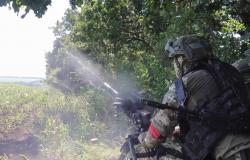IIt is fashionable to contrast a “France of towns” with a “France of towers”. The first, associated with rural areas and considered to be committed to the ideas of the National Rally, would be the guardian of the eternal values of a country threatened by globalization and the “great replacement”. When the second, composed of working-class neighborhoods supposedly populated by mostly uncivil people, would participate in this threat against a backdrop of urban violence and “welfare”.
We fight against these caricatures. And we do not accept this method which consists of dividing territories whose problems are more often common than contrary.
Certainly, there are issues specific to peri-urban and rural areas, the most important of which are dependence on cars – and therefore the price of petrol – and access to healthcare and quality public services. According to an analysis by the Directorate for Research, Studies, Evaluation and Statistics (Drees), published in March 2021, for 100 children under 3 years old, rural children have an average of 8 nursery places less than 15 minutes away, compared to 26 in urban areas.
Similarly, they live on average 25 minutes by car from a pediatrician compared to 7 minutes in an urban environment. As for the so-called “priority city” neighborhoods (QPV), the Borloo plan for the suburbs, submitted in April 2018, recalled that 40% of them do not have a nursery and that their residents “are twice as likely to die before the age of 75 as residents of the most affluent neighborhoods”.
“Everything is harder”
But are these difficulties so different? Don’t they together draw a France that is “losing out” from globalization, despised by certain elites and which revolted with the “yellow vests” in 2018, or following the deaths of Zyed Benna and Bouna Traoré in 2005? This is implicitly stated in the preamble to the same Borloo report, which, following its lines on the obstacles encountered by the QPVs, specifies that “If we add the neglected rural areas and certain towns or basins in serious decline, as well as a significant part of our overseas territories, that’s more than ten million compatriots who are far from the engine of success”. And to conclude that, “For this France, everything is harder”.
Read also the tribune (2023) | Article reserved for our subscribers Urban riots: “It is time for public authorities to recognise and strengthen the integration action of social workers”
Add to your selections
Yes, everything is harder! In Plomelin (Finistère), after seeing the post office and one of the town’s bank branches disappear, its residents regularly have to deal with school closures. In the northern districts of Marseille, less than half of the workforce is employed and nearly one in two residents lives in a poor household. In the Guingamp-Paimpol conurbation (Côtes-d’Armor), there is a shortage of local doctors and the hospital’s maternity ward is under threat. In the 19e arrondissement of Paris, 17% of households are made up of single mothers compared to 12% for France as a whole.
You have 54.89% of this article left to read. The rest is reserved for subscribers.






